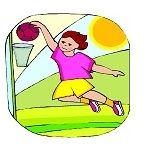Exercise for children is possibly even more important than exercise for adults, but, children are not small adults.
Exercise Programs For Children - Tips About Kids And Exercise
By Donovan Baldwin
 Actually, if we allow our children to play actively, they will probably get a large amount of the exercise they need without any prior planning or much guidance.
Actually, if we allow our children to play actively, they will probably get a large amount of the exercise they need without any prior planning or much guidance.
After all, kids exercise naturally. It's what they do when they get out from in front of the TV, the computer, or the video game...or at least they used to back in my day.
I don't know if you remember a time when the subject of exercise programs for children would not even have been discussed. Just a few years ago, before the television, the computer, Ipods, Ipads, and the cell phone, play  was an active thing, normally done outside, except on rainy days...and, even then, it was not unusual to see children getting their "exercise" by playing in the rain. It's not the same for kids today, and sometimes, we adults have to step in and make sure that our children are getting the exercise they need, not only for present physical, mental, and emotional development, but because what their bodies do now will be reflected in their adult life...including in their senior years. was an active thing, normally done outside, except on rainy days...and, even then, it was not unusual to see children getting their "exercise" by playing in the rain. It's not the same for kids today, and sometimes, we adults have to step in and make sure that our children are getting the exercise they need, not only for present physical, mental, and emotional development, but because what their bodies do now will be reflected in their adult life...including in their senior years.
In modern America, over 60 per cent of the adult population is overweight, and some of this can be traced to childhoods spent sitting glued to a TV screen. It is a simple fact that inactive children become inactive adults.
The good news is, however, that active children not only tend to become active adults, but the information that physical activity programs into their bodies stays with them even into old age and helps slow down the deterioration associated with the senior years.
Young kids should be encouraged to play, and play vigorously, doing things they enjoy doing. Structured exercise programs for children would normally be something you might want to consider for teens, and not for younger children.
However, if you do find you have a child of 6 to 8 years old that wants to start some sort of structured exercise program or activity, maybe wanting to lift weights, for example, you could easily find yourself wondering what you should do. Some experts will tell you that it is perfectly fine for children to exercise in this manner, while there are others who think differently.
While it can be beneficial for your child to take part in an exercise program, or perhaps even a program of weight training for children, there are a few things that you should keep in mind.
Kids Are Still Just Kids, Not Young Adults, And Exercise Programs For Children Should Reflect This
No matter how you slice it or dice it, children are not miniature adults!
You simply cannot use the same exercise and training methods with growing children that you can use with adults, as children are different from adults emotionally, anatomically, and physiologically, and exercise programs for children should take this into consideration.
Here are just a few things you want to consider when thinking about exercise programs for children.
Bones
The skeleton of a child is not completely formed. Children's bones will not be fully mature until they are 14 - 22 years of age.
Young girls in particular, must be careful as exercise during childhood can have very critical effects on bone health that can last for their entire lives. If done properly, these can be good effects, of course, but allowing any child, boy or girl, to try to duplicate the actions of adult athletes can potentially result a negative outcome. Some of these negative effects might not even show up for years.
My mother, age 96, learned a few years back that a pain she has been experiencing recently (in her 90's) is the result of an injury she sustained as a child. In my teens, I suffered an injury to my hip, and these days (age 69) it lets me know that maybe I should not have been riding down the beach in that jeep that day back in 1960. Which leads us to the topic of...
Injury
 In addition to the types of injuries alluded to in the previous paragraph, children are often times vulnerable to overuse injuries, related to growth, such as Osgood schlatter disease, probably the most common cause of knee pain in children. Children also have immature temperature regulation systems as a result of their having a large surface area compared to their muscle mass which may cause them to be more susceptible to injury when they aren't properly warmed up. In addition to the types of injuries alluded to in the previous paragraph, children are often times vulnerable to overuse injuries, related to growth, such as Osgood schlatter disease, probably the most common cause of knee pain in children. Children also have immature temperature regulation systems as a result of their having a large surface area compared to their muscle mass which may cause them to be more susceptible to injury when they aren't properly warmed up.
Exercise programs for children should take such ideas into account.
Hydration And Other Things
Don't let the word "hydration" scare you. It just means to drink enough water. You have to realize that children don't normally sweat as much as adults do. This can make them more susceptible to heat exhaustion as well as heat stroke. Make sure your kids are getting plenty of fluids before, during, and after exercise.
Due to their relatively low muscle mass, and an immature hormone system, it it can be harder for children to develop strength and speed than for an adult.
Their breathing and heart response during exercise are also different
from an adult's. This will have an impact on capacity for
exercise.
Exercise
Programs For Children Should Be Designed For Children, Not Small Adults
On the good side, young boys and girls can drastically improve strength
with weight training. However, unlike adults, neurological
factors instead of muscle growth factors are mostly responsible.
When you consider programs for children, first and foremost you should
obtain a medical clearance.
After that, the first approach to designing an exercise program for
children is to establish a repetition range of 8 - 12 and keep the work
load appropriate for the range. In other words, start easy, advance
slowly. Kids should never be trying to exert for maximum load.
Make sure that children's workouts, particularly resistance training workouts, are spread out enough to have at least 1 - 2 full days of rest between workouts. A standard weight training cycle for any beginner is often to work out on Monday, Wednesday, and Friday, with rest days in between. For a child, especially one new to strength training, the main focus should be on the form of the exercise being performed, not on the amount of weight being lifted. Working on technique will eventually bring strength, and will allow the body to make adjustments to bones and connective tissue to allow for heavier, more intensive training as the child matures.
Before weight training, as before any exercise, warm up and stretching
should be done. Start your children with light loads and low
repetitions, and then make incremental adjustments
accordingly.
Resistance exercise programs for children, i.e. weight lifting, should
contain no more than 3 non consecutive exercise sessions to be done in
a week. You should also see to it that they drink plenty of
water before, during, and after exercise.
You might want to consider getting some sort of all-in-one
exercise machines as you can help your child set it, and they
will not be as likely to injure themselves as they might be if using free weights.
When it comes to getting children to enjoy the health benefits of exercise, the value of a good example cannot be ignored. If exercise programs for children are good, so are exercise programs for adults! So, get in there and work out with your children, or, at least, let them see that you exercise regularly yourself.
As mentioned earlier, getting enough water is very important with exercise, as
it is often times very easy to get dehydrated - especially for children.
The American Heart Association has some good information about this subject at their website. Click here to go to the American Heart Association website(opens new window).
While exercise programs for children are important, and exercise should be encouraged, it is important that parents use good judgement and patience, and not try to force children to try to do more than their bodies are ready for.
Health and Fitness Information and News
While I do not normally recommend diets themselves, healthy eating is important to any health, fitness, or weight loss program. Click Here to learn more about Diet To Go meals.
P. S. If you want to learn more about why Diets Don't Work, please click here.
If you want to learn how to burn fat, a great program to look into is Burn the Fat Body Transformation System by Tom Venuto, internationally acclaimed fitness trainer, and author of "Burn the Fat Feed the Muscle".
|

 was an active thing, normally done outside, except on rainy days...and, even then, it was not unusual to see children getting their "exercise" by playing in the rain. It's not the same for kids today, and sometimes, we adults have to step in and make sure that our children are getting the exercise they need, not only for present physical, mental, and emotional development, but because what their bodies do now will be reflected in their adult life...including in their senior years.
was an active thing, normally done outside, except on rainy days...and, even then, it was not unusual to see children getting their "exercise" by playing in the rain. It's not the same for kids today, and sometimes, we adults have to step in and make sure that our children are getting the exercise they need, not only for present physical, mental, and emotional development, but because what their bodies do now will be reflected in their adult life...including in their senior years. In addition to the types of injuries alluded to in the previous paragraph, children are often times vulnerable to overuse injuries, related to growth, such as Osgood schlatter disease, probably the most common cause of knee pain in children. Children also have immature temperature regulation systems as a result of their having a large surface area compared to their muscle mass which may cause them to be more susceptible to injury when they aren't properly warmed up.
In addition to the types of injuries alluded to in the previous paragraph, children are often times vulnerable to overuse injuries, related to growth, such as Osgood schlatter disease, probably the most common cause of knee pain in children. Children also have immature temperature regulation systems as a result of their having a large surface area compared to their muscle mass which may cause them to be more susceptible to injury when they aren't properly warmed up.